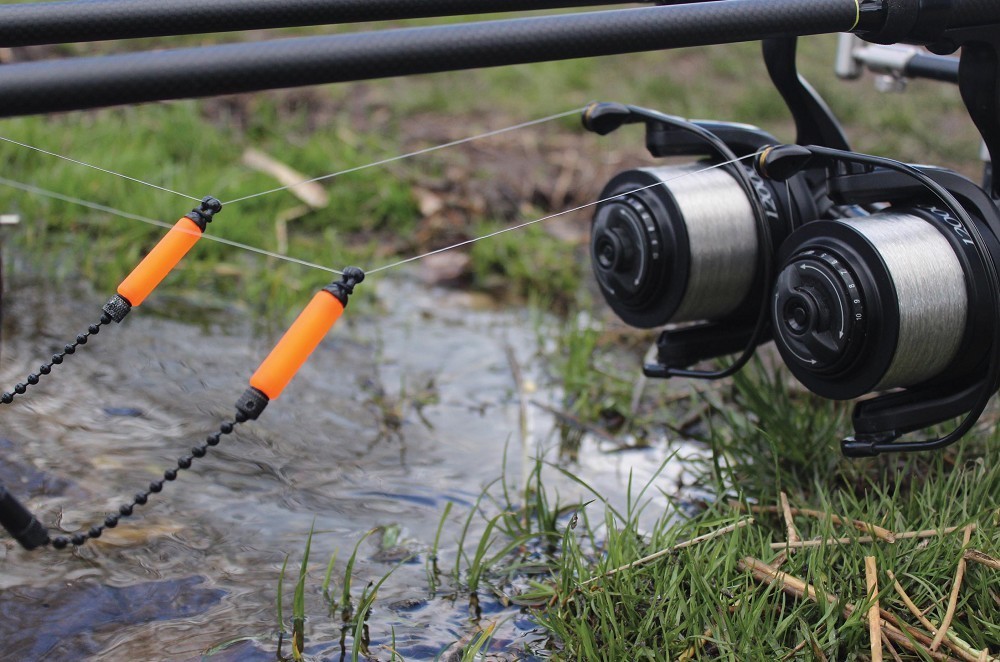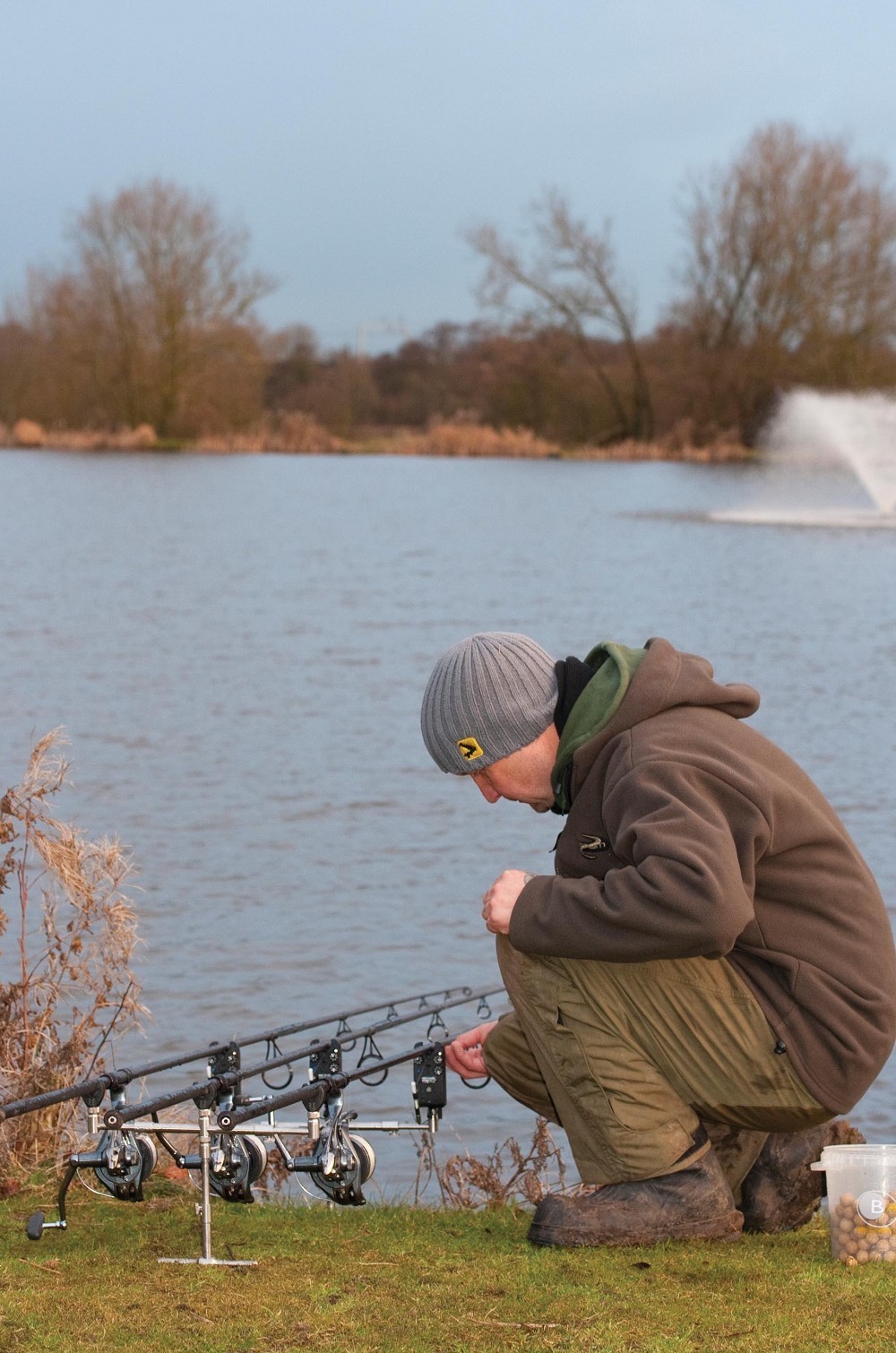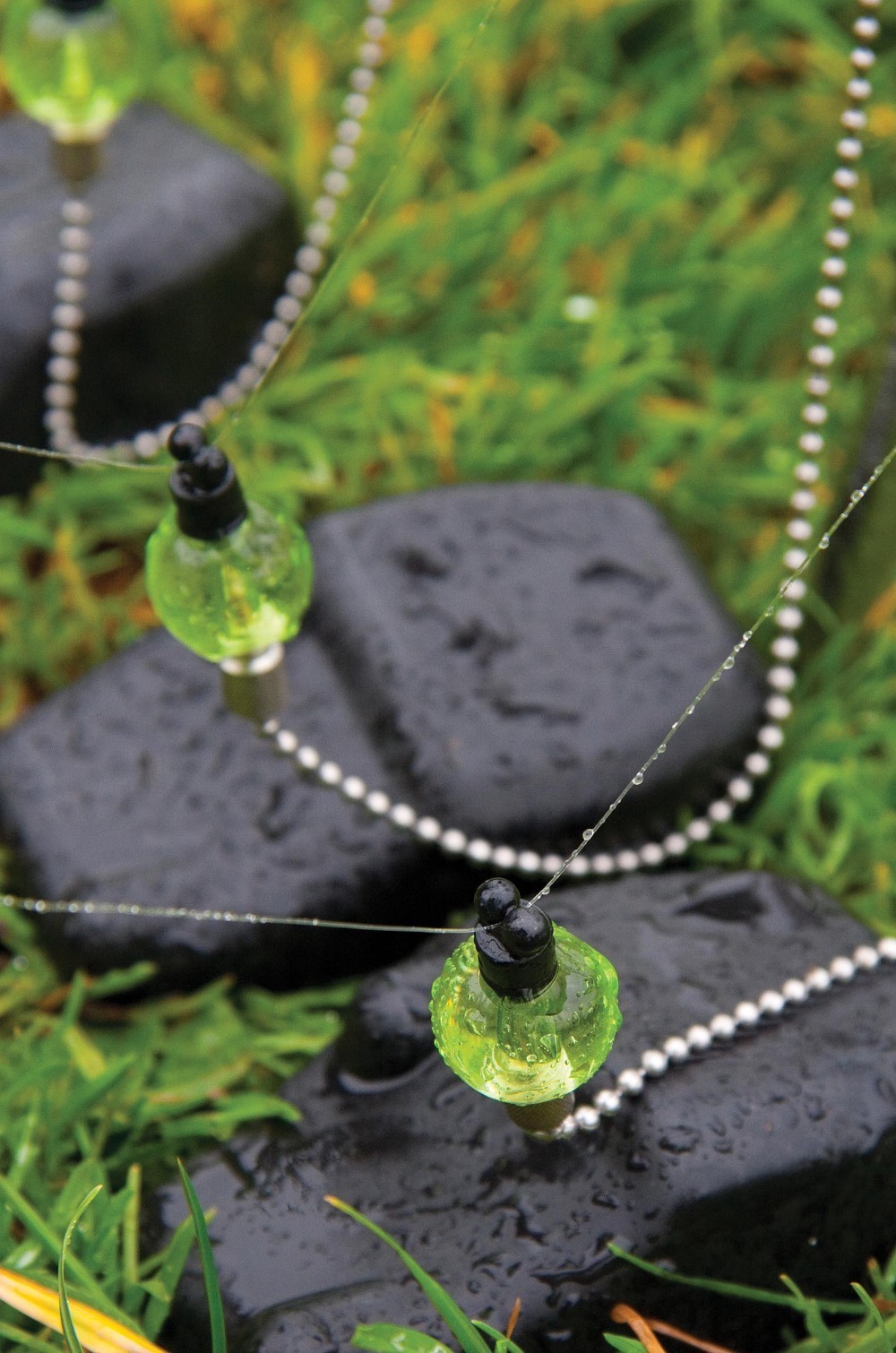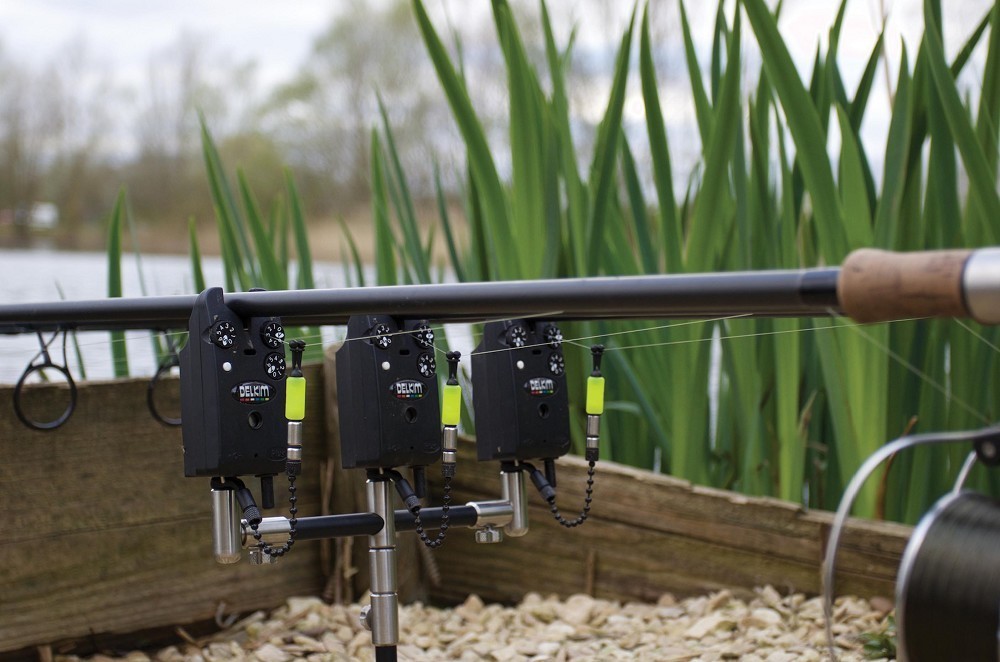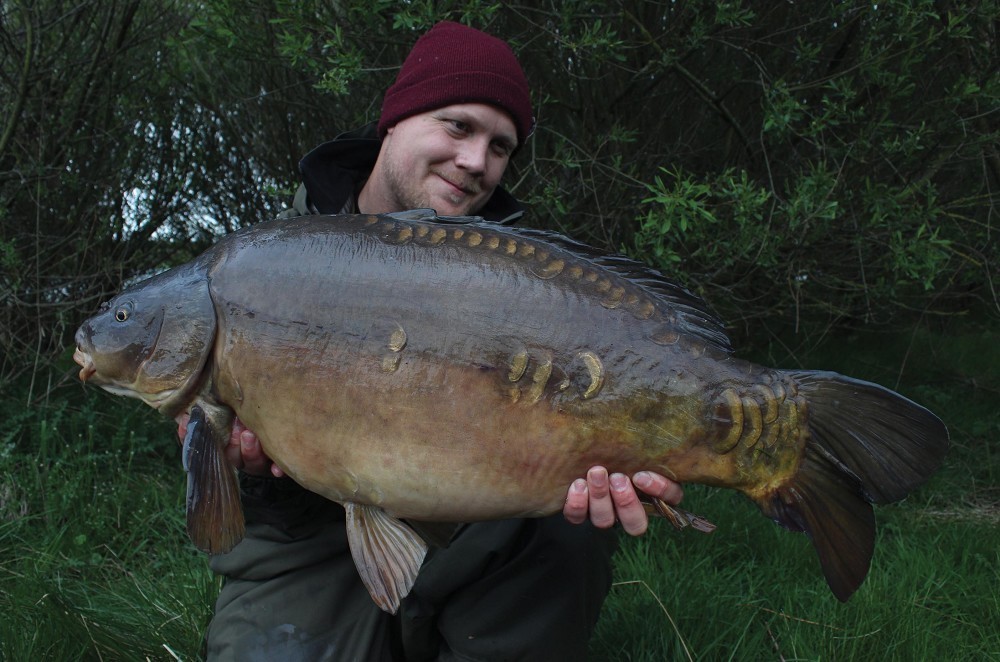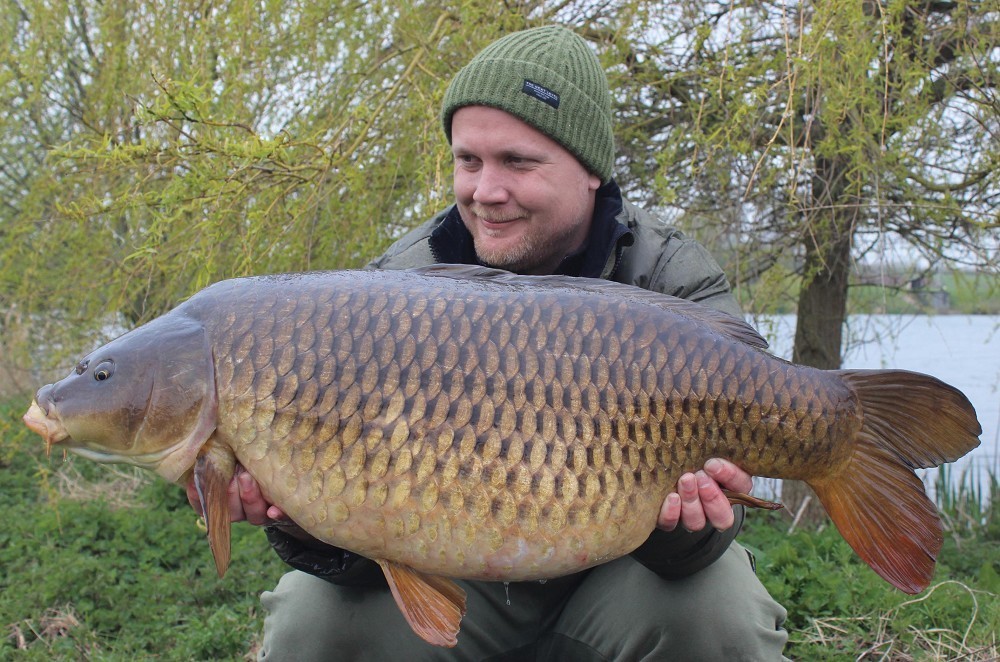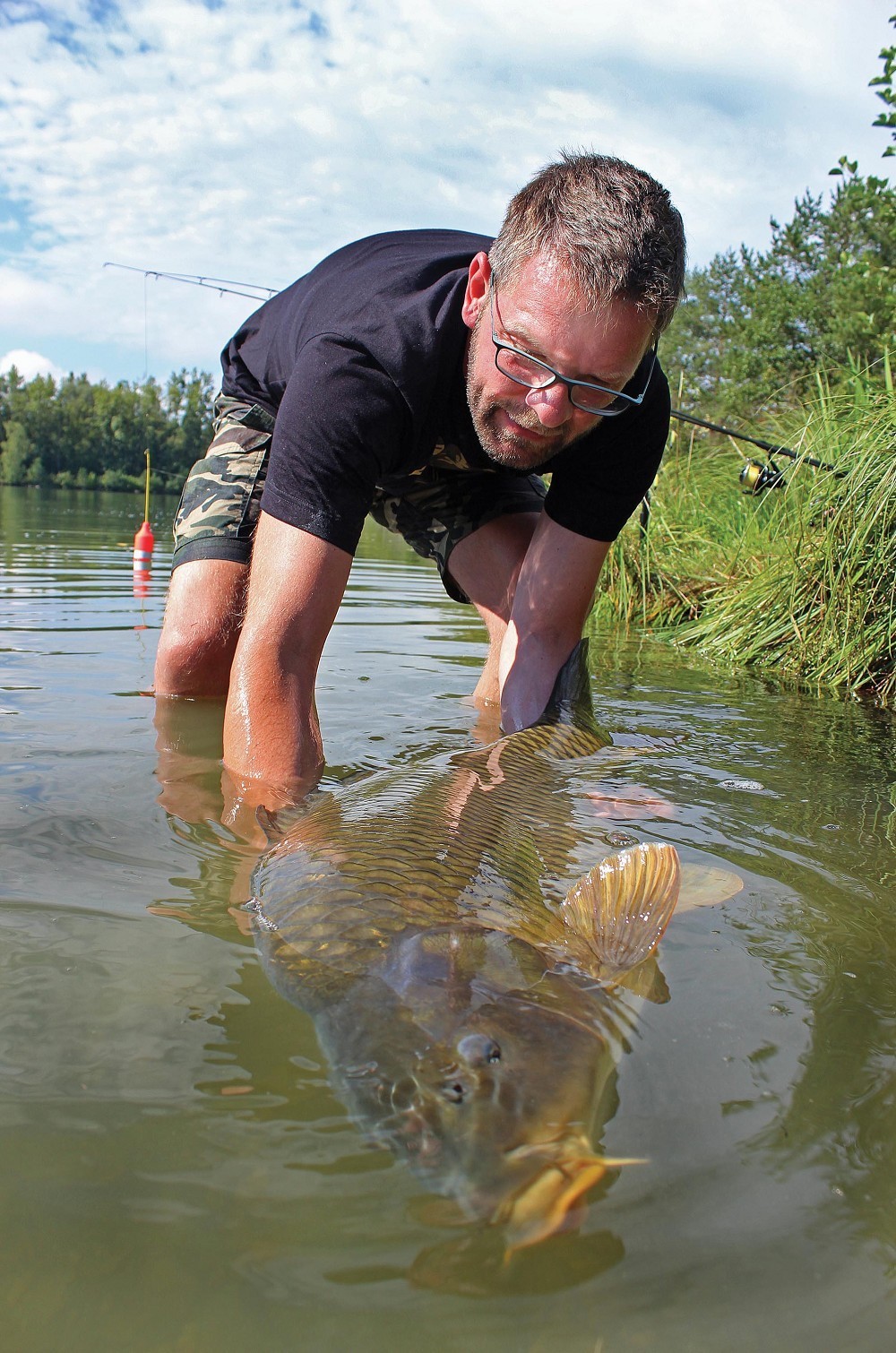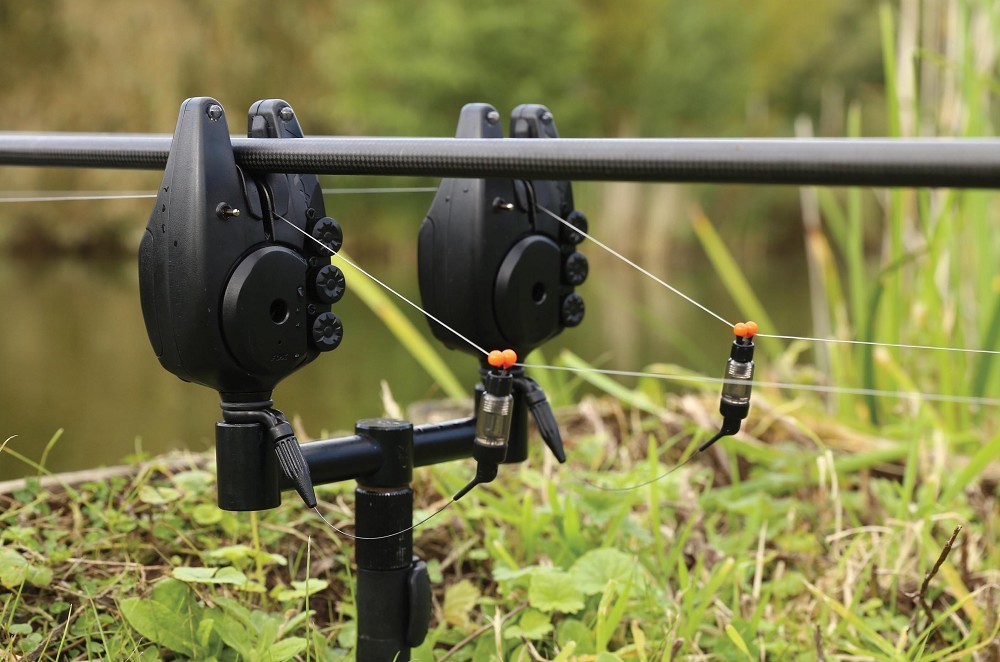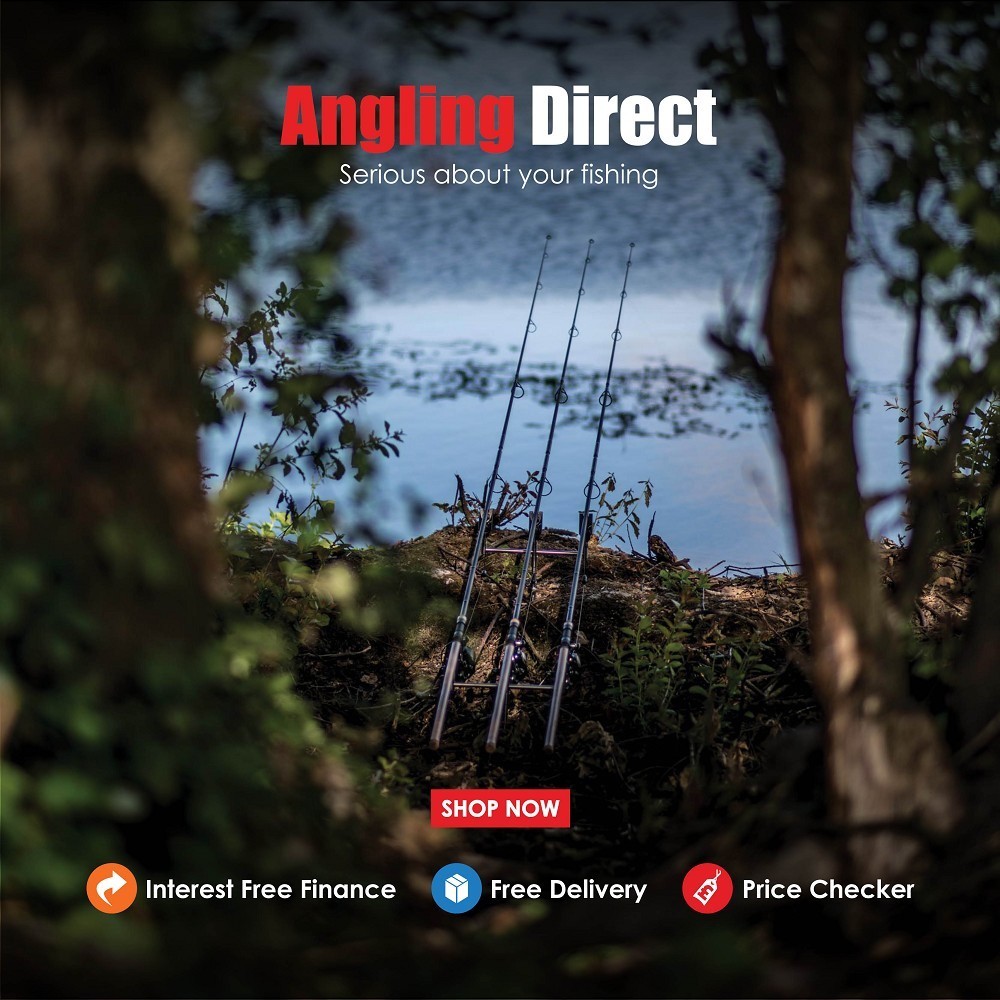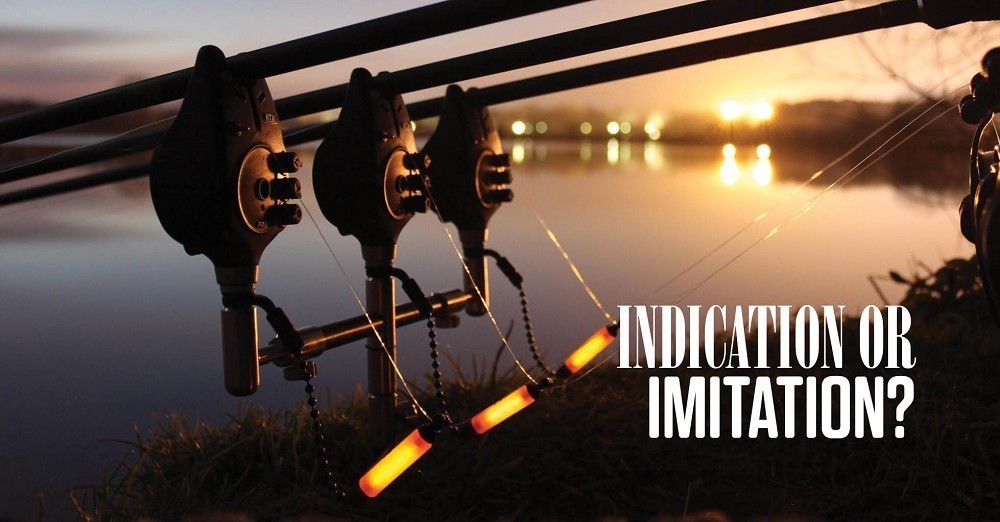
Are your bobbins really telling you what's going on?
Are they just there to make your Instagram feed look the part?
Not another article about bite indication, right? Yep! Soz. But read on, because I’m not preaching any sort of gospel. Why? Because I genuinely believe there isn’t one to preach. However, there are lots and lots of very successful carp anglers out there who think about bite indication in a very different way – they make it work for them – and this article is really about how to make some of that thinking work for you.
Bite indication is something I rarely gave a second thought to growing up. Most of my first carp were caught on a quiver tip rod, where obviously the line is always tight and the indication is very good. As I progressed in my fishing, I knew nothing other than the tight line and bent rod tip, so even with a 2.5lb test curve rod, I fished with a bend in the tip to tell me when a fish was on the end.
As I fished more and learnt more from other anglers, I advanced to Baitrunner reels, bite alarms and bobbins. I reckon in that first year of electronic bite registration, I swapped alarms three or four times, and changed what my bobbins looked like almost every trip. For me, at that time, it was more about what it looked like, than what it did to help register bites. I probably missed out on all sorts and definitely hit into false indications on more than one occasion.
For lots of anglers, they’re probably still in that cycle. Their bobbin is designed to look good, to be ‘carpy’ and how it’s affecting their bite indication is almost secondary.
I see lads trying to slack line at 90yds in a massive crosswind, for instance, paying out copious amounts of line in a vain attempt to sink it. I see lads fishing bowstring tight lines to margin spots and everything in-between. It won’t stop them catching, will it? But in a discussion about bite indication, it’s easy to get lost in a judgemental frame of mind about what’s actually the ‘right’ set-up. At the end of the day, I’m not sure there’s an indication set-up that actually tells you everything that’s going on. I’m even more convinced that none of them actually catch more carp, though knowing about bites sooner can certainly help you convert more bites into fish on the bank.
The Pinch Method
In my own fishing, I set my bobbins in a way that I rarely see others utilising. See I usually fish with a very tight clutch. I don’t really want the fish stripping yards and yards of line, so I don’t really let them have any. Weed or no weed, I fish this way. I find I lose fewer carp.
And whilst this might solve one problem, it also creates another. When the line has pulled tight, the next thing that happens is the stretch comes into play as the line is not free to be stripped from the reel and make the bite alarm roller move. What I need is something that highlights the initial lateral movement. For me, there is one way to achieve this, and that is by pinching the line with the bobbin clip and having the chain tight, aimed back towards the reel, rather than level with the rod. You can see in the images what this looks like. It looks odd, and it draws many comments on the bank – especially from the better anglers in my peer group.
I do it to highlight any lateral movement. It was something that came into play with the original Elstow bobbins. By the line being pinched, it meant that stretch or no stretch, the lateral movement was highlighted, because I could set the bobbin to ping free when the line got pulled tighter. The result? A lot of indication in a short space of time, and a lot of visual indication.
I remember being out filming with Avid’s Ant Molyneux and shortly after chucking a Zig out, I had a bleep on the alarm. At first glance, nothing was happening, but I could see the bobbin creeping upwards, like it was levitating. “That’s a bite,” Ant insisted. There were no more indications. I waited to see if the line would ping free, but it didn’t. I waited, until the bobbin slightly shook. Sure enough, that was the kick of a tail! As I wound down to the fish, it was already on its way through a load of weedbeds. On a slack line, I probably wouldn’t have even known about it, as my bobbin would have been tight to the first line pivot, rather than the lead.
I had a similar thing on Baden’s Bridge Pool, whilst doing the Below The Surface feature with Rob Hughes. Rob does an indication test as part of his inspection process, but before he did this, we were sitting down enjoying the 11th cappuccino of the day with Roy Russell, when I clocked my bright orange bobbin shaking. I walked up to the rod, saw the slight nodding on the tip and before a bleep had even registered, had got an angry mid-twenty on the end who had picked my bait up and gone straight into the weedbed inches nextdoor. Rob was dumbfounded and expected my indication to be poor when we tested it. It was nothing of the sort, in fact, I picked the rod up before Rob had even moved my lead 12-inches.
You can see from the illustrations what happens. If the line is free to move through a clip, and run, the bobbin must move twice as far to highlight the same amount of movement as when the line is pinched. That’s why with the way I set things up, if I get a bleep, I know there has been enough movement to tell me my rig has been moved. You can adjust the sensitivity of your alarm to highlight more or less. It’s something that really came into play with my static perch fishing. Pinching the line made the difference between blanking and catching in the winter sometimes!
It works for me, but that’s not to say it will be the right thing for you. The cool thing with the Yin Yang clip I use is that if I do feel the need to fish a slacker line, like when fishing closer in, or when using Chods or Naked Chods, I can do so. I don’t think this is the best for bite indication, but sometimes having a ‘quiet’ line in the swim is more productive than one that’s singing!
Line movement vs indication
What about weight?
I tend to fish with a small weight on the bobbin, because the way I set it up means the short chain keeps an angle between the line and bite alarm roller. I don’t need weight to help me achieve that. If I was fishing with a longer chain, my approach isn’t as effective. In fact, I think it would be working against me. I’ve used this same approach in various countries and it works very well with braid – the bobbin just comes off the moment the lead moves.
Speaking of overseas fishing, I thought I’d throw a serious ‘giant carp’ angler’s thoughts into the mix. Arjen Uitbeijerse has caught more really, really big carp than most and does so in extreme ways. He’s battered Rainbow for many years and does well everywhere he goes, usually catching the biggest fish really quickly. Arj uses a massive bobbin, like a pint glass, to highlight all the movement through his braid. His braid is floating, and he usually does all he can to keep it that way. It was amazing in Austria, where he was fishing around 100yds out, with all his line on the surface to an Avid Bottle Marker sitting above the spot. His leader came straight up off the lead to the marker. Every time the fish arrived in his swim, the marker would start shaking. His Delkims were going wild with indications, they very rarely weren’t making a noise. Coupled with the big heavy bobbin, it was as sensitive as anything I’d witnessed before.
I asked Arj what the methodology is behind this approach. I personally believe it’s something that could be used on UK venues, where bankside access allows you to imitate the control of using a boat to put your rods out. I can think of a few bay swims where this would totally negate the problems created by big weedbeds and carp living in clear water, where a tight line through the water usually sends them packing!
I also think the line being above the water is better than it running through the water, right? The fish don’t know it’s there, which is something Arj uses to his advantage.
“I tend to use a double lead – so one by the rig and another running one metre away. Usually two 5oz leads,” Arj explains. “This keeps the important part of the leader pinned to the lakebed. Then it’s straight up to the bottle marker. A big bobbin goes on the line and it’s fished tight. But it depends on the lake. Others I fish a slack line, in the normal way. It all depends on the snag situation.”
Interesting, right? How many of us would fish like that if we could use a boat? Not many, right? It’s a method I wish I knew about when I was fishing The Abyss, where we could use boats and braid and do whatever we wanted. I am 100% sure that set-up would have been a much safer way to fish up to and around the snags there, and would have resulted in more fish on the bank.
Other friends of mine have a similar thought on heavy bobbins. Kev Hewitt is an angler who is arguably the most naturally gifted carp botherer I know. With dozens of chunks to his name and back-to-back BCAC titles, he’s a force to be reckoned with on any kind of water. Kev uses a very heavy bobbin, made completely from metal, and fishes them extremely tight. I asked him to summarise the reasons for using this set-up.
“It’s simple. A heavy bobbin and a tight line gives by far the best indication. If the bobbin moves, the lead has moved. It really is as simple as that. If the lead has moved there is either a fish on or I have been done and need a re-chuck. There is no hesitation with tight lines, whereas with slack lines all sorts can be going on out there and you will never know about it. You don’t get many liners at all with the setup I use.”
Interesting thoughts, especially from an angler fishing lakes with gin clear water almost all of the time. Another angler who confronts similar gravel pit situations more locally to me is Roy Russell. Roy’s a savagely effective angler and has caught big ‘uns from a wide variety of venues. He’s another heavy bobbin advocate:
“Lots of weight and a big 4oz lead, so when they move the lead it’s like a springbow effect. It nails ‘em! The heavy weight provides the drop on the indicator to make the bite alarm work more effectively. A good rig does the rest!”
For other anglers, indication is more about knowing about what’s going on generally, rather than just indicating pick-ups. Ellis Brazier is somebody who thinks a lot about line lay, as his fishing is primarily on siltier meres around Shropshire. Ellis is more concerned about searching the area for activity, rather than just telling him when he has a bite:
“Due to a large part of my carp angling being fished in the cooler months when less visual carp activity can mean the fish can be tricky to find, I rely heavily on my bobbins to detect any movement in my swim,” explains Ellis. “An Avid bobbin weighted to suit the conditions that leaves a nice semi slack line gives maximum indication of any underwater movement of my quarry. This form of line bite detection is critical for me in the roving style of carp angling I enjoy so much.”
This is something I don’t think about very often, though it’s a good point. When I fished with Ellis every month, shooting features for Crafty Carper, I remember this approach bailing us out in some extremely cold conditions. Ellis never blanked in over three years of fishing up and down the country – it tells a story. It says a lot when you can fish 40 different venues and catch every time!
Going the other way
So what about light bobbins? So far, I’ve spoken primarily to guys with a similar mindset. It’s quite different to my own, but it has changed my thinking a little. I used to fish a lot with Frank Warwick, who was a massive advocate of the big bobbin-springer indicator set-up. I used to make my own to imitate what Frank was doing and the indication was always very interesting, especially when the springer was a fairly light quiver tip. I can remember fishing the Manor with Frank and both of our bobbins were literally bouncing, the tension in the quiver tips moving like when you get liners on a feeder rod. With a stiffer springer arm, the only bleeps you used to get were bites, often dropbacks. The theory was when using mono you could almost pre-load the stretch in the line, tightened down as much as you dared to a 5oz lead until it was almost ready to release back towards the rod. As soon as a fish disturbed the lead, the whole lot dropped away and you knew instantly what was going on. With the lighter quiver tips, it was like having a quiver tip on the end of your rod, showing you everything. I found that far better than the stiffer springers.
At the opposite end of the spectrum, what about light bobbins on those super slack lines that many more intimate water anglers are more fond of? The biggest problem with light bobbins is that in windy conditions, the bobbins will continually rise up to the rod. You can keep paying out line until you get a line pivot. What will happen is your line will be tight to where your line has got stuck in the lakebed somewhere. There’s a misnomer about this meaning all your line has sunk – trust me, that’s not the case!
Rob Hughes knows more than most about bite indication, he’s been underwater hundreds of times testing various set-ups with different anglers in different situations. Here’s his snapshot take on things:
“There seems to be a general misunderstanding that slack lines somehow all sink and follow the contours of the bottom and give a better line lay. They don’t. There’s all sorts of reasons why this doesn’t happen, such as material, the way it’s laid down and also the obstacles in the way, but any vision that you may have of your line lying beautifully along the bottom in a nice slack curve should almost certainly be ignored.
“The biggest point though is how long it takes to get a registration at the rod end. It is surely common sense that if there is more slack out, it takes longer to pull it tight, and the alarm or bobbin can only register a bite when it is pulled tight. The best indication that we have seen ever in all of the tests that we have done over all the years, was a braided line fished bow string tight, heavy lead and a springer indicator. You do the maths on the stretch and slack lines in that one! Case dismissed.”
Or is it? Another thinking angler, who can certainly catch a few, is Dave Lane. I remember Dave writing in one of the now obsolete carp titles about testing bite indication, and he found tight lines weren’t sensitive enough, due to the amount of stretch in the line. Side to side movement, in particular, was not highlighted very well at all.
With a slacker line, it’s much more sensitive, as the stretch is not in play. Especially if you tailor the weight of your indicator against the weight of your main line – so the further out you fish, the bigger the bobbin needed.
I remember Lewis Read writing about this in CARPology, explaining that he would use a smaller bobbin for close in work, with a slack fluorocarbon or heavy mono, and at longer range, or when fishing over pronounced topographical features, the line lay is more difficult to get perfect, so you need to compromise with the bigger bobbin.
So what conclusion have we reached? Basically, there is no gospel. Just as I stated in the beginning. The reason there are so many bite indication options is so we can adjust to the situation in front of us and adapt to find the best compromise between line lay and bite indication. At the end of the day, if we were all so bothered about having the most sensitive set-up, we’d all be using running leads, braid and tight lines. But there’s more to carp fishing than that, which is why you need to use the space between your ears to make up your own minds.
Oh, and don’t forget, make sure your bobbins look the part. It catches more fish, you know.
The shop oracle speaks
Fosters of Birmingham is one of the busiest tackle shops in Europe, selling to hundreds of carp anglers every day. I asked Carp Manager Tom Colloff which bobbins they sell the most of, to get a picture of what’s popular. Here’s what Tom had to say:
“Stows are easily our best sellers,” he explained. “Followed by the Delkim system. After that, it’s likely products like the Fox Sliks, Avid BoBBins and the Muddy Waters products, but I think they mainly sell on price and how they look.
‘We definitely sell more of the light, slim style of bite indicators - mainly based on what they look like – I’m not sure most anglers care about much else when it comes to hangers and bobbins. For many years it’s been like that. More recently there’s been a move towards indicators that pinch the line, as I think lots of anglers recognise the benefits of highlighting the lateral movement.
“Myself, I’m using springers more and more. The indication is on another level.”
Interesting comments from one of the industry’s retail heavyweights and food for thought, especially given that most of the better anglers I spoke to don’t like small, lightweight bobbins!




